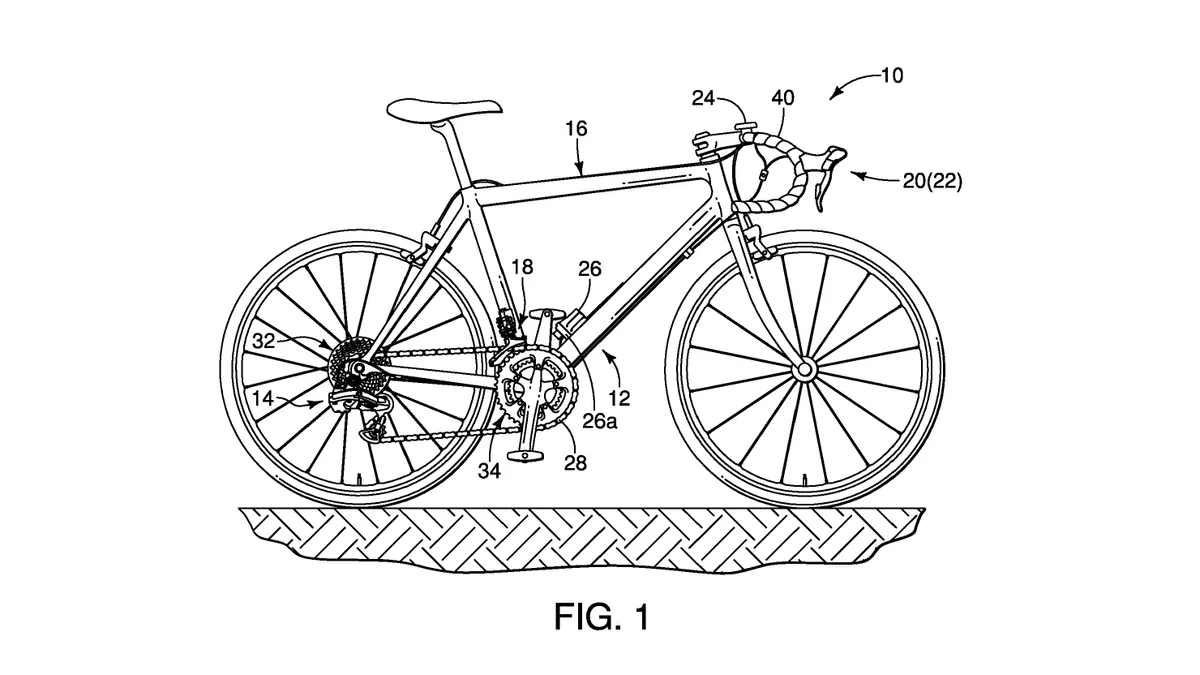Fully embracing my new-found role as the ultimate patent sleuth, I was delighted when a BikeRadar commenter alerted us to the existence of a Shimano patent that describes a small dynamo built into a jockey wheel that could be used to power a Di2 drivetrain.
While the patent (EP2535257 A1) was filed way back on 8 November 2011, it makes for incredibly interesting reading and, alongside the dynamo-equipped jockey wheel, describes a vision for a broader electronic eco-system that could also power a bike computer.
If you’ve got an hour to spare, you can read the full patent here.
So Shimano wants to put a dynamo where?!
Unlike a mechanical groupset, Di2 and similar systems require an external power source (i.e. a battery) to power them. While a Di2 battery will typically last many thousands of hours of riding, it obviously adds yet another layer of maintenance that puts off many.
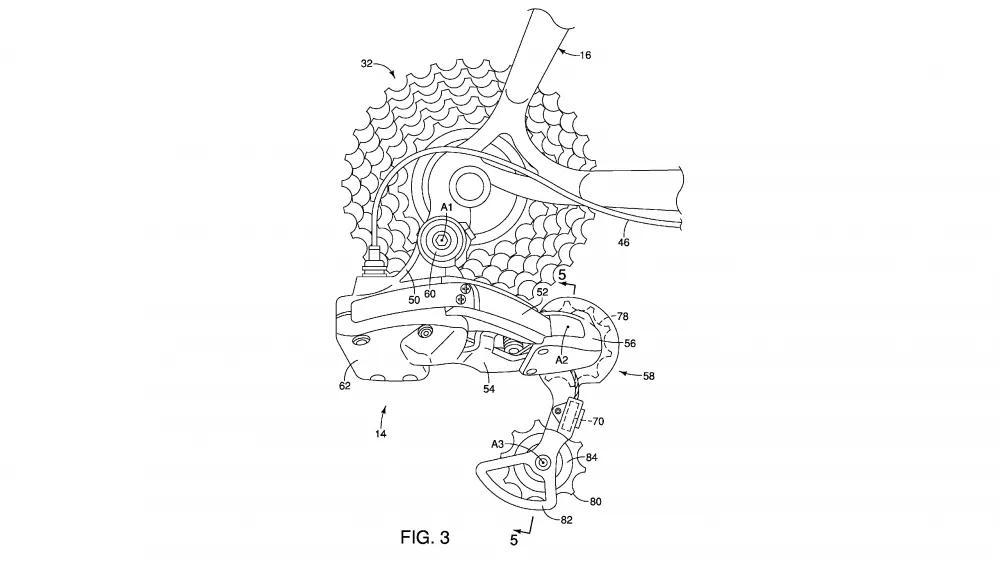
This patent looks to simplify this issue and describes how a pulley (a jockey wheel) that includes a dynamo, which generates electrical energy, could be integrated into the rear derailleur, charging either a battery or powering the derailleurs directly (more on this later).
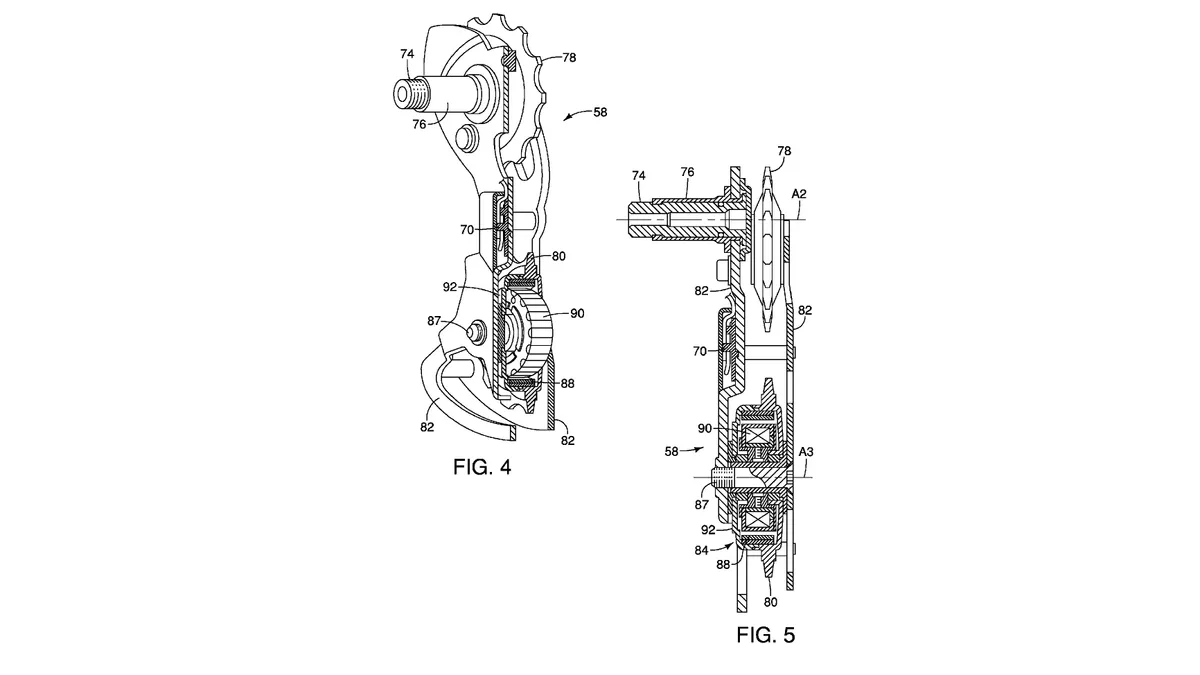
Proposed is a dynamo that would be located within the tension (lower) pulley, though it also goes go on to state that it would be possible for the guide pulley to also be fitted with a dynamo. Presumably this would effectively double the potential power output of the dynamo setup.
As far as dynamos are concerned, the internals of this miniature one present nothing drastically different from the norm. Shimano already produces a vast range of dynamo hubs, so this is effectively just a miniaturised version of its pre-existing tech.

A rectifier would sit between the dynamo, converting the AC current produced by the dynamo to DC for use by the gear shift system or for storage in the “electrical storage system.”
The current produced by the dynamo would be regulated by a power limit circuit, which in the patent, exists as a compact printed circuit board mounted between the pulleys on the derailleur cage.
So how will the dynamo power my derailleurs?
Rather than power the derailleurs ‘on the fly’, the patent suggests that the dynamo could be used to power an “accumulator, capacitor or batteries that are rechargeable”, such as a “nickel hydrogen battery, lithium ion battery or lithium ion capacitor.”
The patent goes on to suggest that, like the current generation of Di2 batteries, this storage system would be removable to mount to the bicycle frame, presumably for charging from the mains or for replacement.
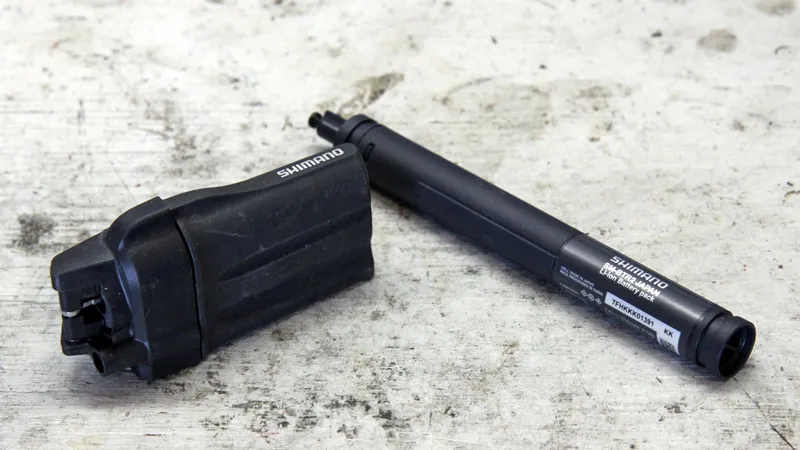
While it’s just pure speculation, I would imagine that by having the dynamo constantly trickle charging the energy storage device it could be made much, much smaller and thus lighter than the current generation of Di2 batteries.
Could this charge my GPS/lights/etc?
The patent even goes on to suggest that the dynamo and the battery could also power a computer unit, which the patent defines as a “bicycle computer that measures, calculates and displays various riding parameters.” (i.e. a Garmin-style computer.)
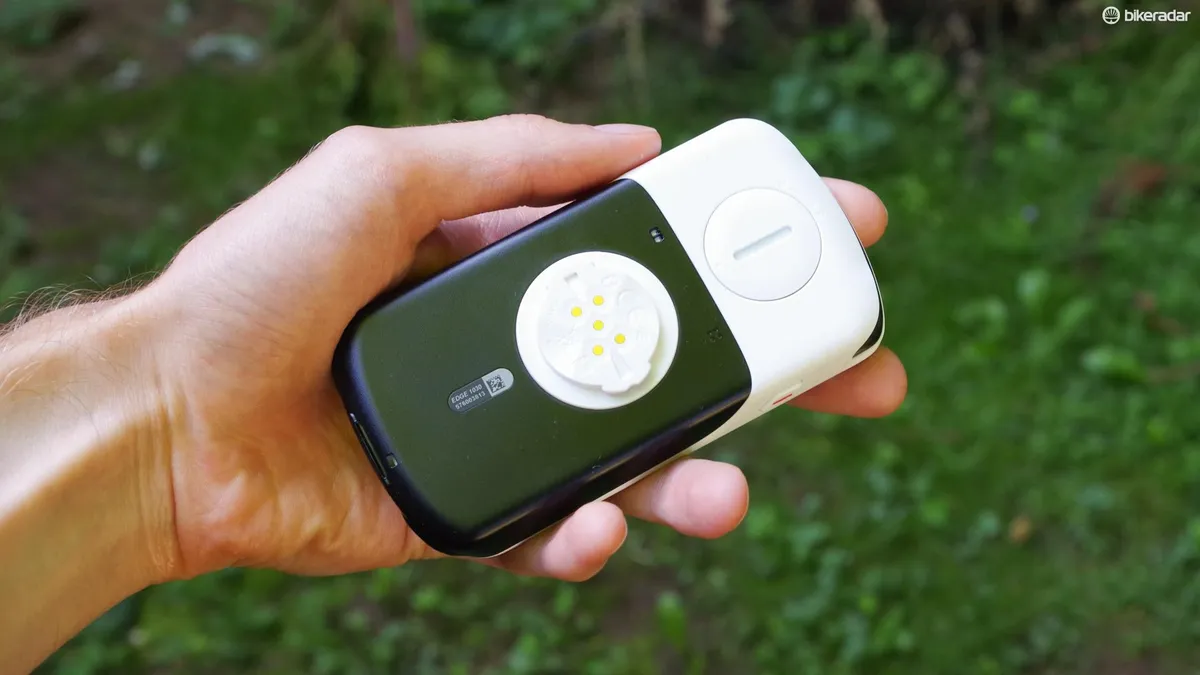
The patent further suggests that a wired connection would be required to make this work, but that is something that I suspect could easily be integrated into modern GPSs — the recently released Edge 1030 for example includes contacts on the base of its mount that are similar to a flash hotshoe on a camera and allows it to connect to an external battery via its proprietary out-front mount.
With that said, the patent also goes on to suggest that the “electrical storage unit could be configured to supply energy to both the derailleurs and computer unit.” This would mean that the computer would not have to include a battery of its own.
This to me suggests that Shimano would consider the bike computer to be such an integral part of the design that an all-singing-and-dancing computer unit could potentially come from it.
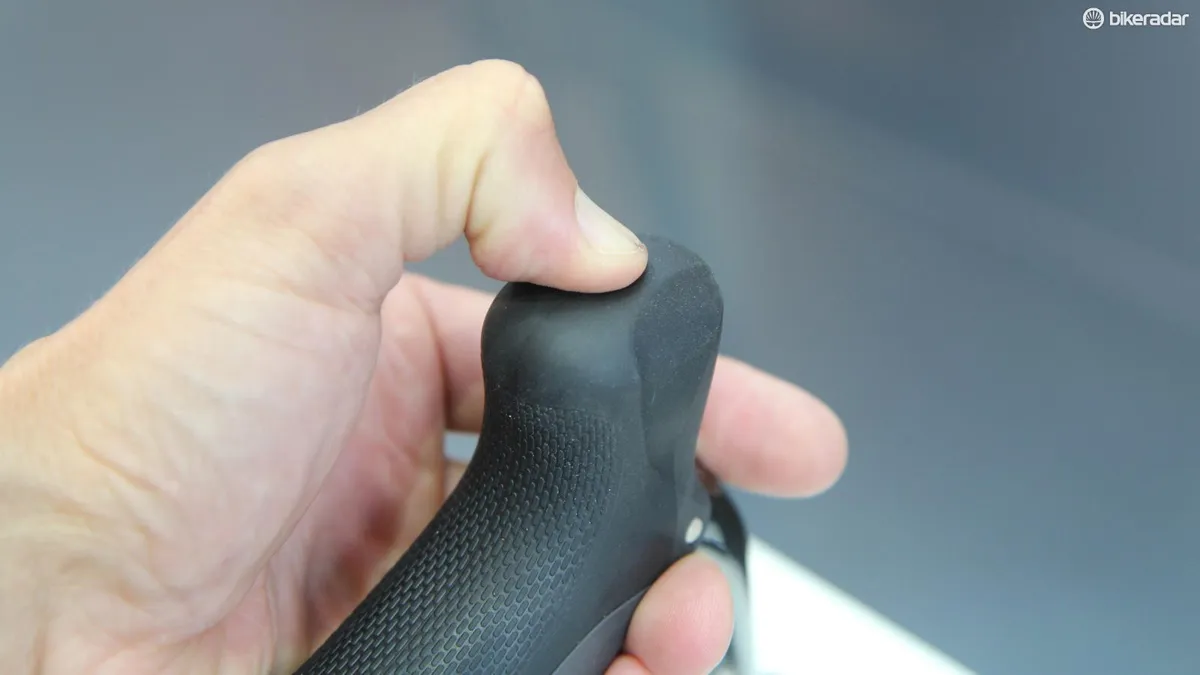
This aspect of the patent should not be overlooked. I for one think that the potential for further integration between electronic devices is a valuable and incredibly interesting prospect. Who’s to say that lights and other accessories couldn’t also be integrated and powered via this system?
Di2 shifters can already be used to control some lights, and the tech-fettler in me hopes to see more of this sort of stuff in the future.
Haven’t people thought of this already?
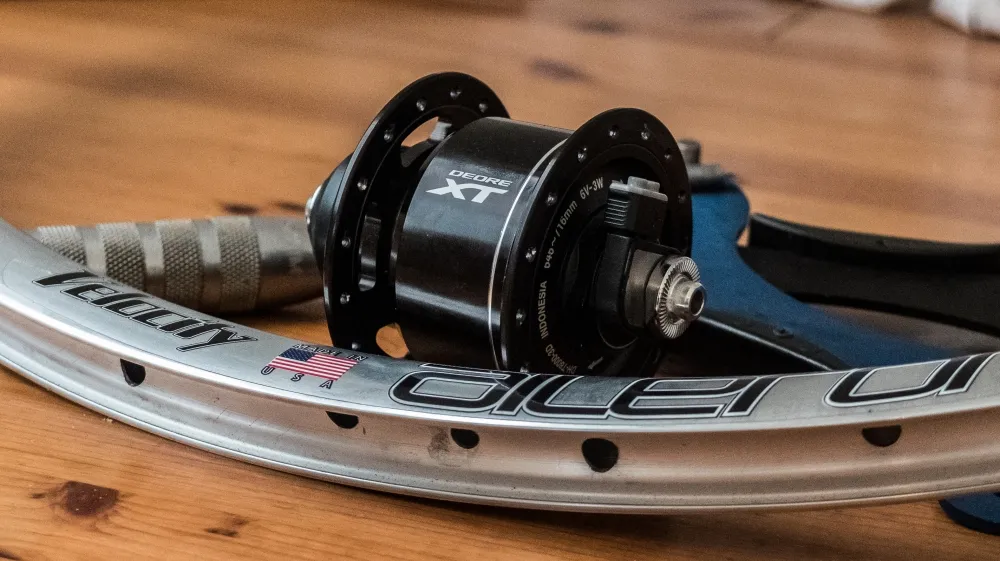
It’s already entirely possible to charge a Di2 drivetrain from a dynamo — my particular favourite example is this incredibly handsome randonneur bike from Chapman Cycles that uses a SON Edelux hub to power the lighting and charge the Di2 battery. There is also an excellent write up on Di2/dynamo setups on ToeCutters.com
While this is a perfectly workable solution, dynamo hubs add a great deal of weight, drag and are overkill for the purposes described.

I currently have the super-sleek Velogical dynamo in for testing, and even this light, low drag, bottle-style dynamo, which runs on the sidewall of a rim, is cumbersome in comparison to the more discreet pulley-based solution proposed.
What about drag?
I can honestly pass no authoritative comment on the potential amount of drag this system would introduce. A cursory spin of that Velogical dynamo suggests ‘not much’.
However, given the lengths that brands such as CeramicSpeed have gone to in an effort to reduce pulley drag, I imagine the answer is probably more along the lines of ‘enough to worry about’, but I suspect the day-to-day rider would be very hard pressed to notice any difference.
How likely is this to make production?
I’m in two minds here. On the one hand, Di2 batteries work for so many shifts already that the need for this system isn’t totally clear. On the other hand, if you think of this system as being integrated into a broader on-bike electronic eco-system (I hate me for writing that too) that includes lights, GPS etc, it makes much more sense.
Looking at it from a different angle — and you’ll have to excuse my full conspiracy-theorist theorising here — I have also often wondered why Shimano has not embraced wireless shifting more fully (though the patent does make reference to the potential for certain aspects of the system, such as the shifters, to be wireless).
While the SM-EWW01 wireless adaptor pod thingies do exist, they are a bit of a halfway house compared to eTap and have not been pushed by Shimano or adopted by the wider industry.
I’m perhaps reading into it too much — and I don’t pretend to be an expert on the opaque language used on patents — but the patent references the front derailleur, shifters and junction box as “known structures,” suggesting that pre-existing components could potentially work with a dynamo-equipped rear derailleur. This could perhaps explain why Shimano appears to not be pursuing a fully-wireless groupset.
With all of that said, it’s worth bearing in mind that the needs and wants of the peloton still has a huge influence on tech in the industry — racers are a bunch who are very unlikely to want to embrace anything that will introduce drag to their drivetrain and with a bus full of mechanics to look after their bikes, they don’t need to worry about remembering to charge Di2 batteries.
Instead, I see this tech being more applicable to day-to-day riders and perhaps even on urban bikes. Alfine Di2 is already a thing and I suspect it’s almost a given that we’ll see Di2 trickle down to lower tier groupsets in the future.
Regardless, it’s still an incredibly interesting prospect and I personally hope we see a 14-speed self-charging Di2 groupset in the next few years!
What do you think of this idea? Are you quite happy with your mechanical groupset or would this tempt you to the digital side? Leave your thoughts in the comments below!

